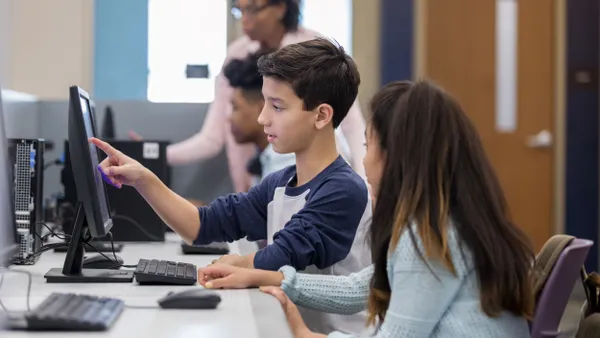Dive Brief:
- Pew researchers estimate 5 million households with school-age children do not have access to high speed internet in their homes, and only a quarter of districts have strategies in place to help students get online outside of school hours.
- Keith Krueger, CEO of the Consortium of School Networking writes for eSchool News that Revere Public Schools in Massachusetts and Charlotte-Mecklenburg School District in North Carolina have teamed up with community partners to combat the digital divide and achieve collective impact.
- CoSN released the Digital Equity Toolkit earlier this year to help schools conduct surveys, engage their communities, consider innovative solutions, and ensure sustainability, and the consortium recommends looking into ConnectHOME, ConnectALL, and Lifeline programs for grant money to support such initiatives.
Dive Insight:
Schools have made great strides in boosting their own connectivity using federal E-rate funding, which increased $1.5 billion since December 2014. Because local libraries are also eligible for this funding, schools interested in developing partnerships to get their students internet access outside of school hours should look there first. Still, schools and libraries in 30 states left a combined $245 million in E-rate funding on the table in 2014.
FCC Commissioner Jessica Rosenworcel has been a staunch advocate for solutions to the homework gap since the agency started researching it. As it turns out, as many as 70% of teachers assign homework that requires internet access, and FCC data suggests as many as one in three households don’t have it. With schools exploring new flipped classroom models, the importance of home internet use will only increase, meaning administrators need to be thinking about strategies now.





 Dive Awards
Dive Awards





